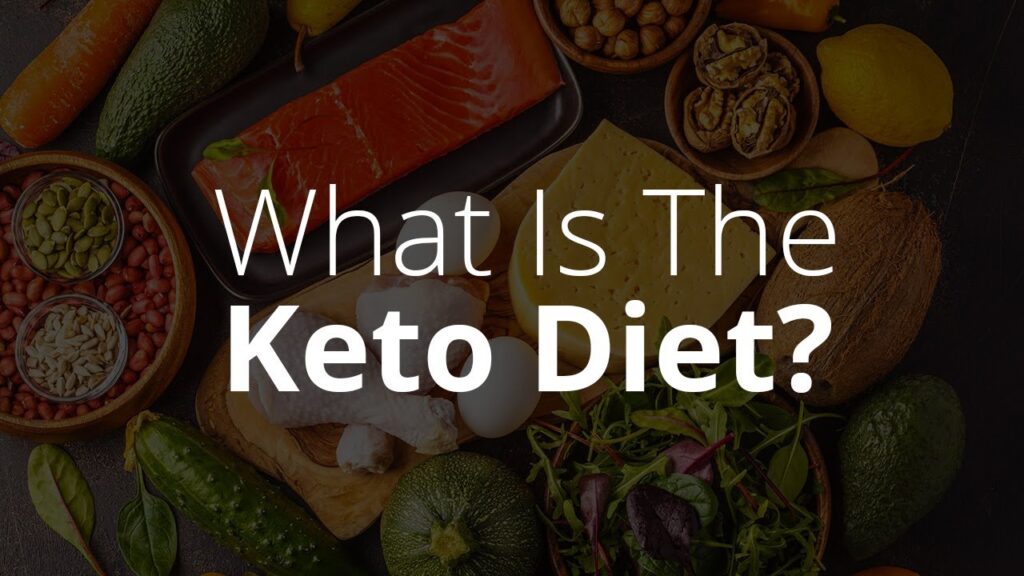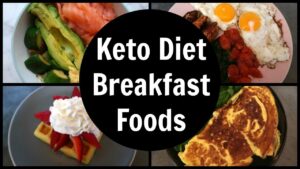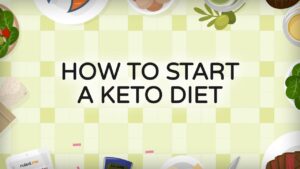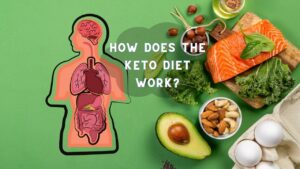
Alcohol is allowed on the Keto diet, but it must be consumed in moderation. You can have clear hard liquors with diet soda, and you can indulge in wine and beer if you are so inclined. However, wine lovers should watch the carb count before drinking. While cheating is permitted when you have fat-adapted to the diet, it is not recommended when you’re not. Here are some tips for a healthy Keto diet.
When eating fish, go for fatty fish. Mild white fish is also OK. Make sure the fish you choose doesn’t contain added sugars, since these will increase the amount of carbohydrates in your body. Similarly, eggs are a great choice for a healthy Keto diet, as they are vegetarian and tasty. Eggs can be boiled, fried in butter, or made into an omelet. As long as you stick to the keto diet plan, fat is allowed in moderation and only to add flavor to food.
Fruit is another healthy option. Fruits such as strawberries are low in carbs and easy to incorporate into your dishes. You can also try avocado oil or ghee. These healthy fats are good for your body and will help burn ketones. And you’ll feel fuller for longer! You can also eat Greek yogurt. It has high protein and contains fewer carbohydrates than other yogurts. Just make sure to consume low-fat yogurt and use it sparingly.
The fat in your keto diet should be a healthy type of fat. Your plate will have a small portion of fat, so it will look as though one fourth of your meal is made of fat. Vegetables and meat will also have fat on them. The key is to spread the fat out. If you don’t like fat, you can try avocados! They are a healthy option for those who want to lose weight and regain muscle mass.
The most common side effect of a ketogenic diet is constipation. Because fat cells contain cholesterol, they must be broken down to release it as part of the digestion process. Generally, the cholesterol level will drop. However, too much cheese or meat may raise cholesterol levels. Despite this, too many vegetables may cause constipation and Small Bacterial Overgrowth Syndrome (SBS).
Another benefit of a ketogenic diet is a stable energy level. Unlike carb-based diets, it can keep you feeling energized and happy throughout the day. When your body has a stable sugar level, it will stop storing fat as fuel. In addition to fat, it also produces hormones that block the glucose produced by the cells. If you feel like eating a sugar-filled dessert, you can substitute avocado with salsa or a high-quality keto cottage cheese. Or you can snack on keto-friendly treats such as cauliflower popcorn and organic butter.
When choosing food items, you need to consider the protein content. The goal is to get at least 0.8 grams of protein for every pound of lean body mass. This is a higher protein intake than many people on a keto diet. While protein is essential, it should also be consumed in moderation. Proteins are low in calories and are better for the body than carbohydrates. You can eat small amounts of fruit or berries.
Lazy Keto diet
The lazy Keto diet is not as restrictive as many people make it out to be. It can still get you into ketosis. Here are some tips for a successful lazy keto diet. First of all, don’t drink dairy or oat milk. You need to use almond, cashew, or soy milk instead. Also, try to avoid fast food. And remember, you shouldn’t skimp on fruit or vegetables.
To lose weight, you don’t need to buy all organic foods. You can be just as successful eating foods from the grocery store. Just pay attention to whether they have non-caloric sweeteners or longer ingredient lists. If you’re experiencing digestive issues, be sure to be more picky. If your meals contain a lot of carbs, you might want to cut back on these foods. Instead, you should focus on eating a variety of fruits and vegetables, and avoiding many processed and refined sugars.
If you’re not comfortable with tracking your macronutrients, you can download an app that does that for you. However, this app requires you to enter all the ingredients into it and pay close attention to your net carbs. However, if you don’t have an app for this, you can simply eyeball the carb content of your meals and snacks. This way, you’ll have an idea of how low-carb foods stack up against one another.
Another popular approach to the keto diet is the lazy keto. It encourages eating low carbohydrate foods while allowing you to vary your protein and fat intakes. The average Lazy Keto diet consists of only 20 grams of carbs per day compared to the strict ketogenic diet. While the strict keto diet entails tracking calories, a lazy keto diet doesn’t worry about these other macronutrients at all.
Another approach to the lazy keto diet is to eat fatty animal products, but instead of counting carbs, the lazy keto diet focuses on keeping net carbs below a certain threshold. Consequently, it is easier to calculate the macronutrients of one nutrient than a variety of foods. While this approach can be effective for some, it is not a foolproof solution to the ketogenic diet. So, if you’re looking for a low-carb ketogenic diet, make sure to consult your physician before making any changes to your diet.
The dirty keto diet is similar to the strict keto diet, but you can eat packaged foods on occasion. A dirty keto diet includes processed foods such as low carb wraps or monk fruit sweeteners. While both are based on a low-carb diet, you still need to count net carbs. This is what makes the dirty keto diet so attractive. And it’s not as restrictive as strict keto. The key to a successful lazy keto diet is to be flexible. You should also make sure to stick to the macros.
Mediterranean Keto diet
If you’re planning on adopting the Mediterranean Keto diet, there are several things you need to know about it. First, you should know about the ingredients in it. A typical meal would consist of a Souvlaki wrap, or lemon fish. Other common ingredients in a keto meal include nuts and avocados. These foods are also low in carbohydrates, making them a great choice for a ketogenic diet. If you’re wondering what to include in your diet, here are some tips for a healthy, heart-friendly ketogenic diet:
As mentioned above, a Mediterranean diet is high in healthy fats, which means you’d want to switch out butter for olive oil. This diet also includes plenty of fish and seafood, which are great sources of protein and fat. As for the vegetables, you should focus on high-fiber and nutrient-rich ones. While red meat isn’t traditionally part of a Mediterranean diet, you can make it work for you by replacing red meat with lean and lower-fat versions. You can also eat dairy in moderation.
The first thing you should know is that most people will consider the Mediterranean diet a healthy option for weight loss. It’s a tough sell to say goodbye to steak and real cream in your coffee, but most people will agree that salads, fish, and olive oil are healthy and delicious. Fortunately, it’s possible to make a diet plan with these ingredients, without having to cut out anything that tastes great! Then, you can add some extra protein and fat alternative to your Mediterranean diet and you’ll be on your way to being healthy and fit.
The Mediterranean Keto diet is a healthy way to lose weight without extreme measures. It features a variety of foods, including healthy fats, which can help lower LDL cholesterol, improve cardiovascular health, and lower your risk of cardiovascular disease. It is also associated with decreased risk of Alzheimer’s disease and Parkinson’s disease. With all the health benefits that come with this diet, you can’t go wrong with it. Just remember to follow the guidelines and you should be able to keep the weight off in the long run.
If you’re interested in starting a Mediterranean diet, make sure to read about the benefits of olive oil and other healthy fats. A Mediterranean diet also emphasizes the consumption of fish rich in omega-3 fatty acids, which are good for your health. Furthermore, a Mediterranean diet encourages enjoyment of food. The Mediterranean diet originated in the Mediterranean region, where eating is done as a social event with family or in front of a TV is encouraged.
Many people are concerned about how restrictive weight loss diets can affect their mental health. These types of diets encourage the body to burn fat instead of protein. The Mediterranean Keto diet is not a structured diet, but a general guide for eating healthy. This type of diet is more nutritious and easy to follow. Doctors and dietitians praise the diet as a healthy alternative to ketogenic diets. It may sound complicated but it has many benefits.
Keto diet plan for weight loss
The ketogenic diet has become a popular choice among dieters as it enables the body to switch from using sugar as fuel to fat as a source of energy. This diet consists of a low-carbohydrate diet that can reduce your hunger while promoting weight loss. It also lowers insulin levels, which may protect you from certain types of cancer and prevent their growth. Ketogenic foods are not the same as low-carbohydrate foods.
To begin with, you should understand what the Keto diet is all about. It’s a diet that limits carbohydrates to less than 30 grams per day. The main foods you can eat while on the diet include eggs, meat, cheese, nuts, oily fish, cream, and low-carb vegetables. To make meal preparation easier, you can use a keto-friendly app called Ketofy to find meals and snacks that adhere to your dietary needs.
Another popular Keto diet tip is to include a lot of monounsaturated fats in your diet. You can find these in olive oil, nuts, and avocados. This is because fats are necessary for synthesis of muscles. In addition to fats, you can eat a variety of fruits and vegetables. These fruits and vegetables are rich in fiber, vitamins, and minerals. Legumes also provide some benefits, but they’re high in carbohydrates.
People who are on the Keto diet plan for weight loss may experience symptoms called “Keto Flu” during the first week or two. This is normal and temporary. Drink plenty of water to keep hydrated and get enough sleep. Other side effects may include stinky breath, irregular bowel movements, and increased levels of acetone, a compound found in the ketones. Fiber supplements can help keep you regular. If you are concerned about keto flu, make sure to consult your doctor before starting the diet.
The keto diet is low in carbohydrates, and you should eat at least 60-75% of your calories as fat. While many dieters add butter to their food or mayonnaise to lettuce wraps, the latter is not healthy and does not contribute to weight loss. It’s better to eat a good source of fat such as avocado or coconut oil. Also, don’t skip saturated fats altogether. They contain too much fiber and may cause digestive distress.
Among the ketogenic diet plans, the ketogenic diet requires you to reduce your carbohydrate intake. You should aim to replace 60 to 80 percent of your calories with fat. Protein should make up ten to twenty percent of your calories. Protein is important for maintaining muscle mass, but too much protein can depress ketosis. When the body is in ketosis, the excess energy is stored as body fat. If you’re trying to lose weight and build muscle mass, try to limit your protein intake to 20 percent per day.
The keto diet requires dedication and commitment, as it leaves your body in a state of shock. By limiting carbohydrate intake, your body’s glucose levels drop and enter ketosis. This process can be uncomfortable and cause a condition called keto flu. You may experience headaches, insomnia, and fatigue. You’ll also have to limit your intake of certain vitamins, including vitamin D and calcium. Besides being low in calories, the keto diet has many other downsides.
Diet for sleep apnea
There are several key elements to a diet for sleep apnea. First and foremost, your diet needs to contain plenty of omega-3 fatty acids. These fats help regulate the production of norepinephrine, a stress hormone that reduces REM sleep. You should also include foods rich in omega-3 fatty acids, such as salmon, wild herring, sardines, and mackerel.
Another key component to any sleep apnea diet is the elimination of stimulants. Caffeine, alcohol, and refined sugar can all overstimulate the body and mind. Avoiding meat, fried food, and fast foods may help treat the condition. Additionally, a diet for sleep apnea can help people lose weight. If you’re interested in learning more about a diet for sleep apnea, you can start with the Sleep Apnea Weight Loss Plan.
The right diet for sleep apnea also needs to contain foods that decrease mucus production. Bananas are excellent sources of tryptophan, which is important for the production of mucus. Fatty meats can increase the risk of cardiovascular disease and may contribute to your symptoms. In addition to these foods, you should avoid red meat, poultry, and fish. These meats can contain saturated fats that may worsen your sleep apnea.
Garlic is a great herb for those suffering from sleep apnea. This aromatic herb has been used for centuries to help patients deal with inflammation of the respiratory system. By chewing garlic cloves before going to bed, you can make it easier to breathe without any difficulty. You can also add crushed garlic to your water before bed and breathe in the steam. Another great ingredient for sleep apnea is Indian gooseberry. Consuming walnut seeds before bedtime will help regulate breathing.
Depending on your symptoms, a diet for sleep apnea may also include a few key foods to minimize the risk of OSA. Intake of Vitamin B supplements is a key component for treating sleep apnea. Take a free risk assessment to find out if you are at risk of this sleep disorder. You may be surprised to learn that the majority of individuals suffering from OSA do not know it.
There are many other dietary changes and lifestyle changes that can help with this condition. By reducing the amount of alcohol and processed food in your diet, you will be able to get a better night’s sleep. Additionally, exercise can help you maintain your healthy weight and prevent or alleviate the symptoms of sleep apnea. But a good diet can’t cure the disease. If you’re already taking medications for sleep apnea, you should consult your physician.
While weight loss is considered to be the first line treatment for sleep apnea, it may not always be the best option. It may be necessary to change your diet in combination with CPAP, physical therapy, and lifestyle changes. Studies have shown that a diet combined with CPAP is more effective than either treatment alone. The best combination of treatments is to start with the diet and then add CPAP as a second treatment.




